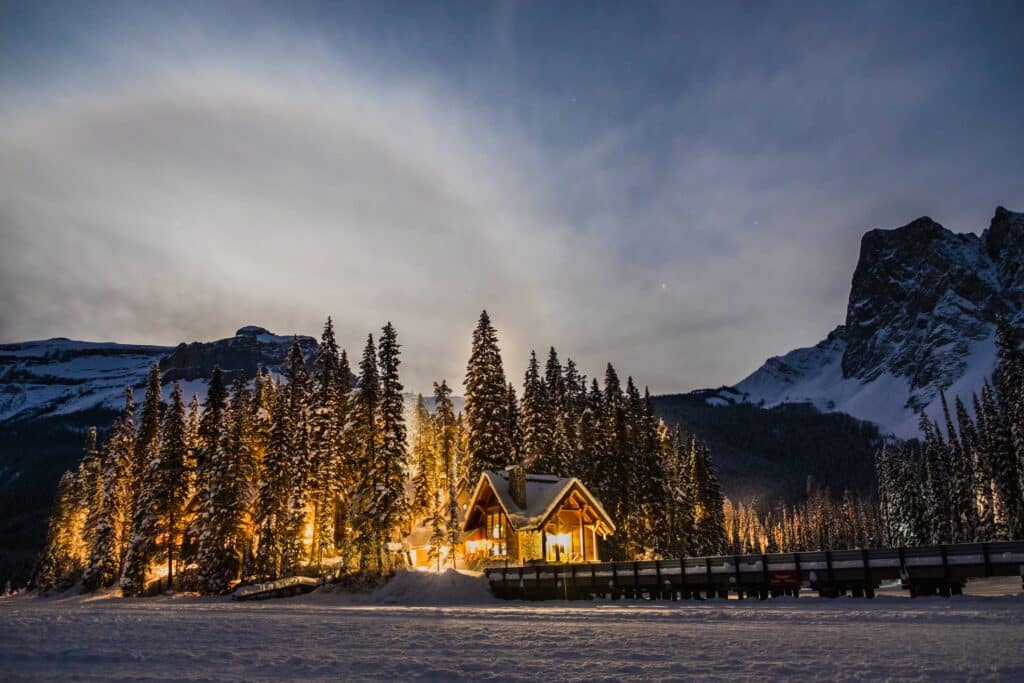Mountain House Architecture
Mountain House Architecture: Take Advantage of Your Mountain Setting
Living in the mountains can be a peaceful and magical experience for mountain lovers, where they can enjoy the landscape and their diverse ecosystems. It is no secret that mountain houses offer a much-needed escape from the lives that people lead. They are great places to spend the holidays, where mountain lovers can live in a calm atmosphere and spend their time doing activities while enjoying the fresh and clean air. This is where mountain house architecture comes into play, as it can help create a design that will seamlessly blend with the surrounding environment and provide a peaceful and simplistic way of life.

Here are a few architectural ideas for a successful mountain house design:
1- Create a direct connection with nature:
People who choose to live in the mountains, regardless of the season or weather, love nature and the tranquility it brings them. This is why it is important to create a direct connection with nature that allows the residents of the house to further enjoy the environment, the fresh air, and the landscape. For example, incorporating over-sized windows on the back of the house would help the residents enjoy the panoramic views and surroundings in a comfortable and perfect setting that allows them some privacy at the same time. Decks can also help the residents deepen their connection with nature, as they would allow them to spend more time outdoors and enjoy the sun and the breeze.
2- Choose simple, but durable, materials:
Architects and designers often choose to use simple and durable materials that reflect the environment surrounding the house. For example, they often rely on stone, wood, concrete, and steel for both the outdoor and indoor looks of the house because, in addition to the simplistic and laid-back look they provide, they are quite sturdy and can withstand extreme weather conditions. On the other hand, these materials can probably be locally sourced as well, which means that the design of the house would also blend in well with the surrounding nature. In addition, durable materials, such as vertical siding boards, for example, can create a grandeur look on a home. They can make the mountain house look bigger while matching the surroundings. Shingles are also durable materials that are mostly used for roofs. However, they are now being used as siding as well, creating a unique house design and providing more protection.
3- Extend indoor living spaces to the outdoors:
Mountain houses are all about not isolating oneself from the surrounding environment. Residents of mountain houses want to take advantage of their mountain setting by making sure that they have an outdoor space that allows them to connect more with nature. Outdoor living spaces are also great spaces for families to gather, especially if they provide all the comforts necessary. This is why it is important to create a seamless transition from the indoor living space to the outdoor area. One way to create this seamless transition is by installing large windows and glass doors between the indoor and outdoor areas. On the other hand, architects also seek to build screened-in porches to allow home residents to enjoy their outdoor spaces regardless of the season. This is where the space can be furnished more freely, with rugs, furniture, fireplaces, and even cooking spaces.
4- Create a low maintenance design:
Besides building sloped roofs to help reduce water and maximize natural light, architects and designers often adopt a laid-back attitude toward design in mountain houses. In fact, people who live in or visit mountain houses for a vacation like to spend their time relaxing and enjoying the scenery. This is why it is important here to provide a low maintenance design that would blend with nature and blur the lines between what is natural and what is man-made at the same time. For example, preserving the native trees around the house, as well as native bushes and flowers would create a natural feel and would allow the landscape to thrive with little attention. Architects can choose here to mix the natural grass and rocks with the patio leading up to the house or to the back of the house, creating a smooth link-up between elements.
5- Incorporate the suitable colors:
In most cases, mountain houses are known for their neutral and earthy colors that help them blend with the majestic beauty of the landscape around them. When choosing their building materials, architects and designers often let the nature steer them in the right direction. For example, some architects choose to go with the color grey by using materials such as stone or grey paint to match the mountains in the landscape. However, since mountains are not the only elements surrounding a mountain house, some choose to match the exterior of the house with the trees and foliage, using shades of brown all around. In certain cases, contrasting colors, such as black and white, can also make a mountain house stand out and look great against the mountain landscape.
Let Nature Guide You
Mountain house architecture is a process that transforms ideas and visions into reality. It is important in a mountain house to maintain privacy with clever orientation and positioning. And even though there are infinite ideas to create the perfect and most relaxing environment, the best designing strategy in this type of setting is to let nature be your guide, as nothing can speak to you more than the variety and details in a certain landscape, helping you create original and unique designs and provide the best experiences for residents. Most importantly, do not forget to explore the different perspectives in nature, as through its textures, colors, shapes, and culture you can draw your inspiration.
Follow Noëlla Aoun Design Studio or visit our website for more Urban Design, Architecture, Interior Design, Landscape Design, Environment, Real Estate and Sustainable Development articles.

